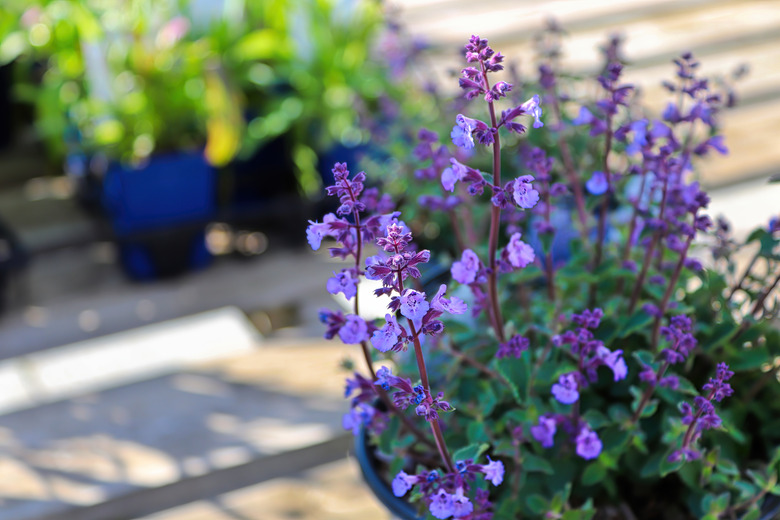How To Cut Back Catmint
We may receive a commission on purchases made from links.
Catmint (Nepeta spp.) bursts with clouds of blue, lavender, or pink flowers for weeks on end in harsh environments, even during the dog days (ahem) of summer. These perennials in the mint family grow in clumps anywhere from 8 inches to 6 feet tall, depending on the species and variety. And yes, catnip is a type of catmint well-known for attracting nibbling felines.
Catmint is just as attractive to bees and delightfully easy to grow, but can become ragged and floppy in midsummer unless pruned. Catmint also turns dormant in winter, leaving behind a clump of spiky, brown stems in the garden. The best times to prune catmint are in summer after the first bloom has faded and in early spring just as your plant is waking up.
Cutting Back Catmint in Summer
Cutting Back Catmint in Summer
Depending on the variety, catmint plants bloom in the garden from late spring to early fall. After the first bloom, taller plants can flop over and become unkempt. This is a great time to shear your plant and encourage a second flush of flowers. Use a pair of disinfected pruning shears to create a tidy mound, trimming as much as half the plant's height if needed. These tough perennials will grow right back.
At the same time, make sure you aren't causing the conditions that made your plant flop. Catmint is drought-tolerant, prefers lean soil, and requires at least six hours of full sun. Your catmint could be flopping because of too much shade, overwatering, overly rich soil, or unnecessary fertilizing.
Deadheading Catmint in Fall
Deadheading Catmint in Fall
You might love catmint for its prolific blooms but feel less enamored with how productively it seeds and spreads. To prevent unwanted seedlings, deadhead the flowers in fall before the seed fully matures, when it turns dry and brown. Trim off the spent flowers and seeds and put them into the trash bin rather than the compost bin. Or save the seeds for planting in a spot of your choosing.
Deadheading isn't necessary for varieties of N. x faassenii such as 'Walker's Low,' 'Blue Wonder,' and 'Cat's Meow.' N. x faassenii hybrids are sterile, but you can still deadhead them if you would like to neaten up the plants.
Pruning Catmint After the Growing Season
Pruning Catmint After the Growing Season
You don't want to stimulate new growth in winter, so catmint should not be pruned again until the old season's growth is completely dormant, typically after several frosts in late winter or early spring. Prune off old growth by cutting dead shoots back to about 2 or 3 inches high, just above any green growth that has reemerged from the mound. Eventually healthy new stems will cover the old growth, bursting with a new cloud of blooms.
